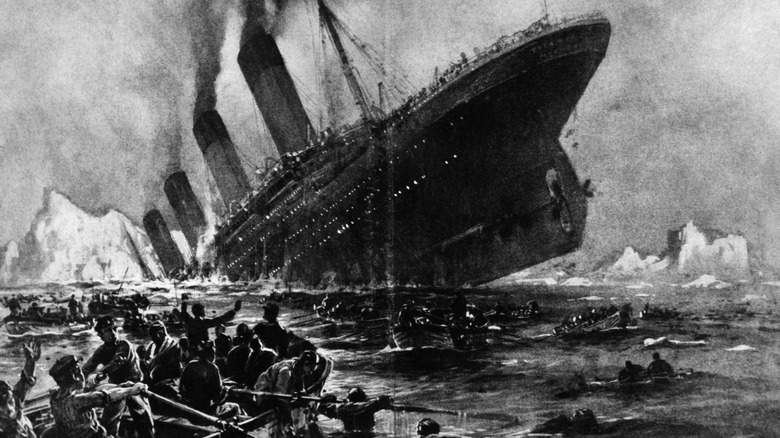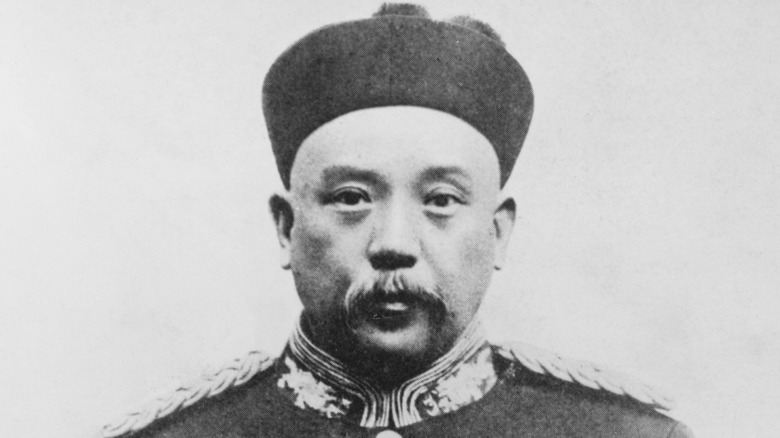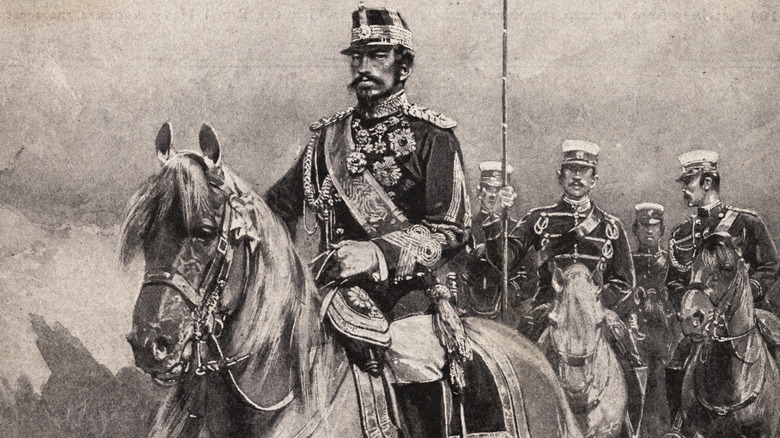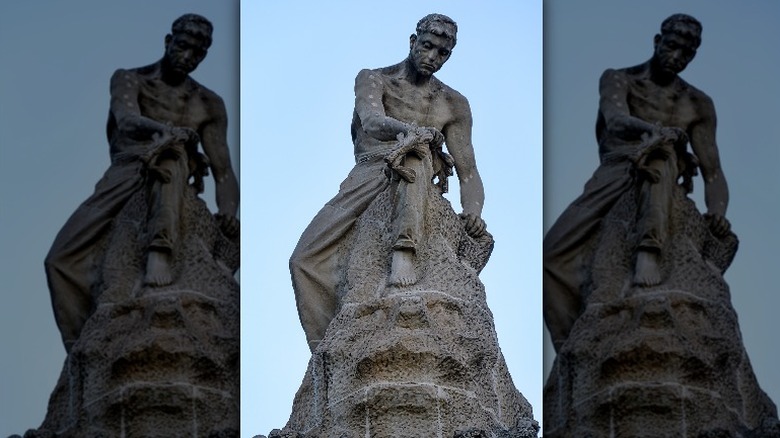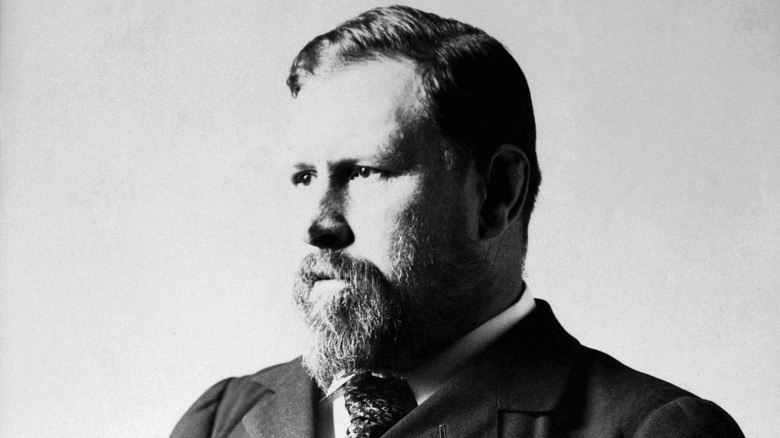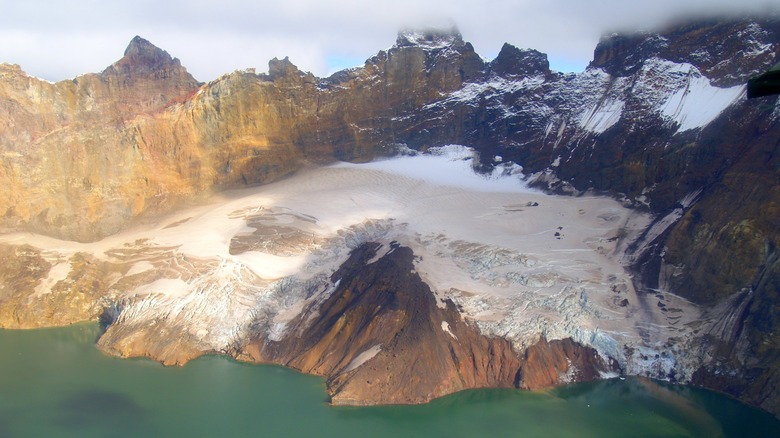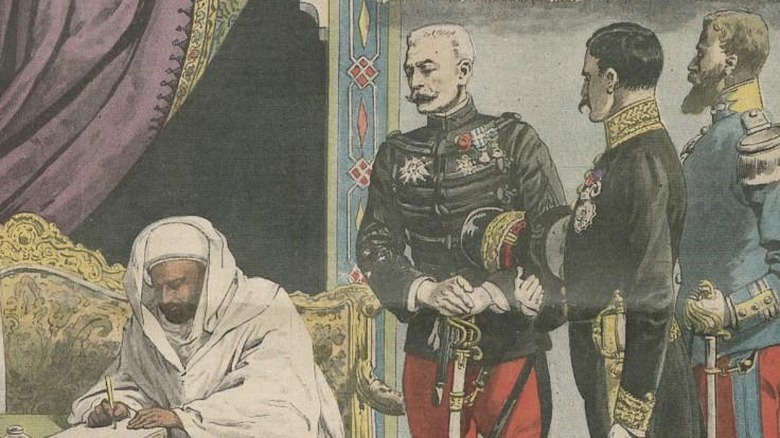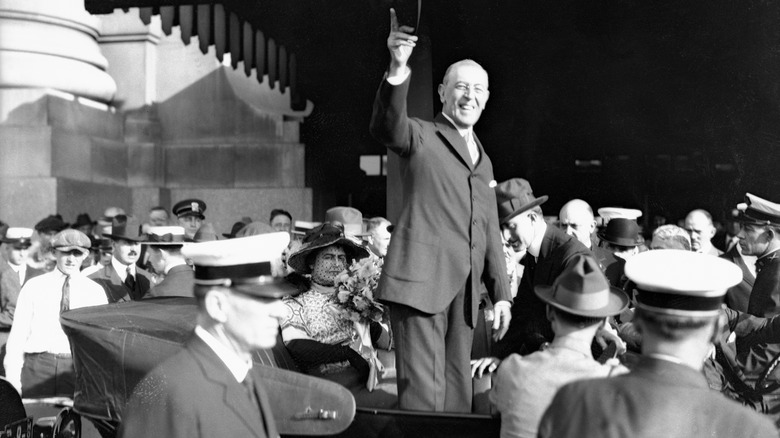The Biggest Events Of 1912 (Besides The Titanic)
The tragedy of the Titanic was a media sensation almost from the time the ship foundered. The Library of Virginia keeps samples of headlines printed across America and the world about the disaster, showcasing shifting reports on its scale and human interest angles. Virginia's own The Times Dispatch ran a banner declaring: "1,800 Lives Are Reported Lost In World's Greatest Marine Disaster." On the other end of the country, the Hawaiian Gazette plainly stated, "1200 Drown On Titanic." The Washington Times turned grim with its headline: "Bodies Of Victims Of The Titanic Disaster Sighted Near Scene Of The Wreck Yesterday." And in Britain, The Evening Standard soberly reported, "Only 710 Now Said To Be Saved."
For posterity, the Titanic's sinking has become one of the seminal moments of 1912. Films, studies, exhibits, and modern-day disasters connected to the ship and its wreck can still make the front page. But the world is a big place, and a lot can happen in a given year. There were triumphs, tragedies, and developments across the globe in 1912, some with lasting repercussions for the 20th century.
The Qing Dynasty gave way to the Republic of China
For China, 1912 was a transformative year almost from the first date on the calendar. The country's premier, Yuan Shikai, began the year in negotiations with nationalist revolutionaries who had been fighting against the Qing dynasty since October 1911. The monarchy, already weakened by run-ins with Western powers in the previous century, was particularly vulnerable at the time; Emperor Puyi was still a child with an ineffective regency. The government failed to manage a complicated financial agreement that put the interests of foreign lenders against local firms for railway construction contracts, prompting armed rebellion that captured Wuchang in central China. A succession of declarations against the dynasty followed.
Yuan, an established military commander and statesman, was respected by both the rebels and the conservatives at court. He was brought out of retirement by the regent, who had already conceded to the creation of a constitutional system. But by the time Yuan was secure in his role as premier, a rival provisional government was established in Nanjing. Yuan conceded to an armistice in December, and his talks with the revolutionaries continued until February 12, 1912.
The final negotiated proclamation abolished the monarchy and established a presidential system of government. Yuan was named president, revolutionary leader Li Yuanhong became vice president, and the emperor retained a courtesy title. But forming a stable constitution and government proved difficult, and Yuan soon moved to consolidate his own power.
The Meiji era came to an end in Japan
On July 30, 1912, Emperor Meiji died in Japan, bringing an end to the era of Japanese history that bears his name. Since his ascendency in 1867, Japan had undergone a radical transformation from a feudal society under the Tokugawa shogunate to an industrialized constitutional monarchy. The prefecture system of modern Japan was instituted, education reforms introduced ideas from the Western world, and the newly minted national army put down samurai revolts and embarked on an aggressive imperial project.
Unlike many of his predecessors, Meiji played an active role in these developments. It was under his reign that the executive power of Japan moved from the shogunate to the imperial court, which also superseded the legislature. If he didn't often spearhead modernizing policies, he gave them his support and authority, and he sought to model the blend of traditional Japanese culture and Westernization sought by his government. He also made himself visible to his people. According to Donald Keene's "Emperor of Japan: Meiji and His World," one of his last acts before dying was a physically grueling troop review he could have avoided, but for his compulsion to duty.
Succeeding him was his son, Taishō. But the role of the emperor in imperial Japan shifted almost immediately due to Taishō's character and health. Indecisive, unmartial, and beset with physical problems, his military and political advisors considered it wise by December 1912 to ignore the emperor himself when exercising his authority.
The Spanish prime minister was murdered by an anarchist
Alfonso XIII reigned as king of Spain in 1912, but the government was managed by his prime minister, José Canalejas y Méndez. A career politician originally from Ferrol, Canalejas worked his way up from a member of parliament and several cabinet positions before obtaining the premiership in 1910. The previous government had been badly shaken by violent clashes the year before between the Spanish military and an alliance of various radical groups; among Canalejas' highest priorities in office was quelling social unrest through electoral reform. Alfonso regularly involved himself in politics and kept rotating between liberal and conservative governments, but he did lend his support to Canalejas' efforts to pull Spain toward a more stable democratic system.
Also on the agenda for Canalejas was an ambitious "Padlock Law" restricting the power of the Catholic Church, efforts to limit Spain's loss of control over Morocco to the French, and greater autonomy for the Catalan region. But on November 12, 1912, as he was passing by a bookstore, Canalejas was assassinated by an anarchist, who died by suicide shortly after. He had been in office less than three years.
Canalejas' death would impact Spain for years. Historian Salvador de Madariaga wrote in his "Spain, A Modern History" that Canalejas (memorialized with the statue pictured above) was the only man capable of guiding Spain to a properly democratic constitutional monarchy and checking radicalism. With his death, there was no great statesman to prevent the chaos that followed World War I.
Bram Stoker died
On April 20, 1912, the Irish author Bram Stoker was at the end of several losing battles. Despite producing several novels, "Dracula" having brought him the most notice, his reputation in British society was almost entirely due to his slavish dedication to actor Henry Irving and the Lyceum Theater, for which Stoker was the manager. He was in poor financial straits. And, having spent his earliest years bedridden with illness, he had been falling back into poor health since a stroke in 1905. Stoker died that day in April, never living to see how far his best-known novel would penetrate into world culture.
The exact cause of Stoker's death has been a matter of some mystery and scandal. His death certificate vaguely alluded to "locomotor ataxy 6 months" as the cause. Stoker's own grand-nephew, Daniel Farson, claimed in a 1975 biography that "locomotor ataxy" was a roundabout way of saying he died of tertiary syphilis (via the University of Oxford blog). As evidence, Farson alluded to family anecdotes about Stoker's eccentricities, rumors of his frosty relationship with his wife (and subsequent sojourns in Paris), and the bizarre nature of Stoker's last novel, "The Lair of the White Worm," taken as an example of late-stage mental impairment from syphilis.
Against Farson's claims, Dr. Dick Collins wrote in the Journal of Dracula Studies that there is no evidence that Stoker had syphilis, extramarital affairs, or any mental decline. Evidence for any particular theory on his death remains scant.
The United States added two new states
The United States' lower 48 reached that number in 1912. Two states were admitted that year, both carved out from territory ceded to the U.S. by Mexico decades earlier. New Mexico was the first, admitted on January 6. It had already been organized as a province under that name since 1609, and remained so even after Mexican independence from Spain. Most of the territory came into American hands through the Mexican-American War, with the remainder coming through the Gadsden Purchase in 1853. Whether under U.S., Mexican, or Spanish control, New Mexico was a regular site of clashes between colonists and Apache and Navajo tribes, which persisted until Geronimo's surrender in 1886.
Arizona was once Navajo and Apache territory as well, among other tribes. The Hopi village of Oraibi in the northeastern part of the state has been inhabited since at least A.D. 1150. The Spanish came seeking silver, and initially organized part of modern-day Arizona into the region of Pimería Alta. The territory wouldn't take on the name Arizona until 1863, after it came into American hands. When New Mexico was admitted to the Union, Republicans tried to lump Arizona in with it to improve their chances of holding a Senate majority. But voters felt otherwise, and on February 14, Arizona became the 48th U.S. state.
The African National Congress was founded in South Africa
Today, the African National Congress (ANC) is a major left-wing political party in South Africa that has effectively achieved one-party rule since the end of apartheid. During the apartheid era, it was a banned political organization that allied with the militant Pan African Congress (PAC) in committing guerilla tactics against the government, often with aid from the Communist bloc. But when it first formed in 1912, the ANC, or the South African Native National Congress as it was then known, was considered a moderate organization.
While apartheid as such did not exist in 1912, precursor legislation was passing through government, sparking a number of organizations and resistance movements. Tensions increased when the National Convention froze out Black, Colored, and Indian citizens, and came to a head with the beginning of debate on the Natives Land Act in 1911. The ANC was first organized under its original name on January 8, 1912. Its founding members and first officers voiced approval for British control and influence over South Africa and explicitly appealed to British tradition in advocating for equality before the law for oppressed groups. But direct appeals to British authorities after the passage of the Natives Land Act brought no help, and by the 1940s, the ANC (so named in 1923) turned more radical.
The 20th century's largest volcanic eruption happened in Alaska
Mount St. Helens may be a more recognizable name to many, but the largest volcanic eruption of the 20th century took place farther north. At the beginning of June 1912, violent tremors were felt in the village of Katmai in Alaska. On June 6, a massive explosion shot up a giant cloud of ash. Three volcanic episodes over 60 hours produced a cloud over 1,000 miles wide and more than 100,000 feet high, according to the National Park Service. The city of Kodiak, over 100 miles away, was drenched in ash, which was reportedly so thick and dark that it obscured lights just an arm's length away. Drinking water was fouled, and gases released in the eruption caused cases of temporary blindness.
The eruption, initially thought to be from Mount Katmai, was the first volcanic eruption of such a size in recorded history to happen on land, making it a valuable scientific opportunity. Investigations began shortly after the eruption. President Woodrow Wilson preserved the area, in part to safeguard such studies, in 1918. The remote location of the eruption site made work on it difficult, but it was eventually determined that the eruption happened at Novarupta, 6 miles from Mount Katmai. It represented an unusual phenomenon wherein the magma chamber is situated far from the eruption and collapses, in this case forming the Katmai caldera. Novarupta's explosion also created what's known as the Valley of Ten Thousand Smokes.
France took over the government of Morocco
Like other areas of Africa, Morocco was subject to increasing pressure from European states by the dawn of the 20th century. France was a problem for the sultanate since 1830, and Spain conquered and extracted significant territory after the death of Abd al-Raḥmān in 1859. Successive sultans found it increasingly difficult to maintain Moroccan independence. Reforms attempted by Abd al-Azīz, who took the throne in 1901, were frustrated by incompetence. Abd al-Azīz's own efforts to adopt Western customs faced a hostile reception from many of his people, some of whom instigated rebellions. Meanwhile, France and Spain negotiated with other European powers to place Morocco under their spheres of influence.
Abd al-Azīz was taken for a collaborator with foreign powers by his brother, Abd al-Hāfiz, who successfully deposed him in 1909. But Abd al-Hāfiz soon became dependent on French troops to secure his throne, as unrest in the country persisted. The price the French extracted was the Treaty of Fes, signed on March 30, 1912. Under the terms of the treaty, the sultan retained his title and nominal authority over the country, but Morocco became a protectorate of France, with the resident general holding actual power. The north was carved out to accommodate Spanish interests.
Revolts against the new arrangement broke out in less than a month, but the French maintained control. Abd al-Hāfiz was made to abdicate (depicted above) in favor of his brother Yusef, seen as a more pliable figurehead.
The Terra Nova expedition ends in tragedy
The fate of Robert Falcon Scott and the Terra Nova expedition is one of the most dramatic stories associated with Antarctica. Scott's name was linked to the continent even before the tragedy; his National Antarctic Expedition, lasting from 1901 to 1904, fed his fame and made significant headway in the scientific understanding of Antarctica. But Scott, an Edwardian gentleman, most wanted to be the first to the South Pole, for the honor of Britain.
With funding from three governments, Scott organized what he called the British Antarctic Expedition, which launched in 1910. The Terra Nova was the name of the ship used by Scott's team, who found themselves in an unexpected race; Roald Amundsen, the Norwegian explorer foiled in his efforts to conquer the North Pole, abruptly turned his focus south. The two teams briefly met at the Bay of Whales in 1911 before going their separate ways.
Based at Cape Evans, Scott's team carried out important field work, including the discovery of some of the first fossils ever found on Antarctica. Their meteorological records are still used today. And Scott did reach the South Pole, on January 17, 1912. But Amundsen had just beaten him there, and on the way back, Scott and his team succumbed to terrible weather and died in the snow. In his recovered diary, he wrote: "Had we lived, I should have had a tale to tell... which would have stirred the heart of every Englishman."
The Nefertiti Bust was uncovered
Much is unknown about Nefertiti, queen of Egypt from 1353 to 1336 B.C. Her parents are unknown, her country of origin is unknown, the final resting place of her body is unknown, and just what role she played in the rule of Egypt alongside her husband Akhenaten is a matter of contention. The abundance of images made of her has suggested to some that she was co-ruler, and one theory holds that, after her husband's death, she became pharaoh under the name Smenkhkare. But neither theory is supported by conclusive evidence.
If Nefertiti remains an enigma to Egyptologists, the bust of her uncovered by German archeologists in 1912 is one of the most famous relics uncovered from ancient Egypt. Expedition leader Ludwig Borchardt wrote at the time, "Description is useless, must be seen," a sentiment he echoed in a more complete description 11 years later (via the Staatliche Museen zu Berlin). The form and color of the bust are remarkably well preserved, and the only significant damage to the figure is to the ears and the left eye, which is missing. The bust is also something of a rarity among Egyptian relics; the human figure was typically depicted in full.
Woodrow Wilson was elected president
1912 was an election year in the United States, among the most colorful in its modern history. It was among the few times that the presidency was sought by a viable third-party candidate. Theodore Roosevelt had grown disillusioned by the Republican administration of William Howard Taft, as had a number of progressive Republicans in Congress. A concerted effort was made to deny Taft the Republican nomination. Roosevelt won key victories in the primary elections, but due to Taft allies holding the machinery of the party, his renomination was ensured. In response, Roosevelt led a group of dissidents in forming the Progressive Party, later nicknamed the Bull Moose Party after Roosevelt compared himself to one of the famously sturdy animals after surviving an assassination attempt.
While the Republicans fractured, the Democrats nominated Woodrow Wilson, governor of New Jersey. He was considered a reformer himself, if more conservative than Roosevelt, and the party had already made significant gains in Congress during the 1910 midterms. A fourth name in the race came in the form of Socialist Party candidate Eugene V. Debs, but the strongest contenders were Wilson and Roosevelt. Taft, despite being the incumbent president, was not considered likely to prevail.
Nor did he. Though his and Roosevelt's combined share of the popular vote beat out Wilson's, their split of the Republican vote let the Democrat take a modest majority. In the electoral college, Wilson received 435 votes to Roosevelt's 88 and Taft's 8.
The golden eagle went extinct in Ireland
1912 was a contentious and transitory year for Ireland. An attempt to win Home Rule through Parliament ran aground in the House of Lords and Unionist and Republican factions began forming armed militias, setting the stage for revolution later in the decade. Away from politics, there was a significant development that year for Ireland's wildlife. According to a paper by Lorcan O'Toole, Alan H. Felding, and Paul F. Haworth in Biological Conservation, 1912 is believed to be the year the golden eagle became extinct in Ireland.
The golden eagle is widespread throughout the Northern Hemisphere, but the Irish population suffered from an uptick in targeted killings that began around 1850, and habitat disruption caused by human activity. These factors eventually drove the eagles into remote areas of the mountains, and the few remaining birds stopped mating. The last recorded breeding pair was noted as living in North Mayo around 1912. Per O'Toole et al., Ireland is the only country in modern history where golden eagles are known to have died out.
Fortunately, extinction was not forever in the case of the Irish golden eagle. A reintroduction program begun in the 1990s has created a sustainable population, though they remain confined to the Donegal area. A limited number of prey species and habitat degradation may explain why the eagles' range hasn't expanded since returning to Ireland.
